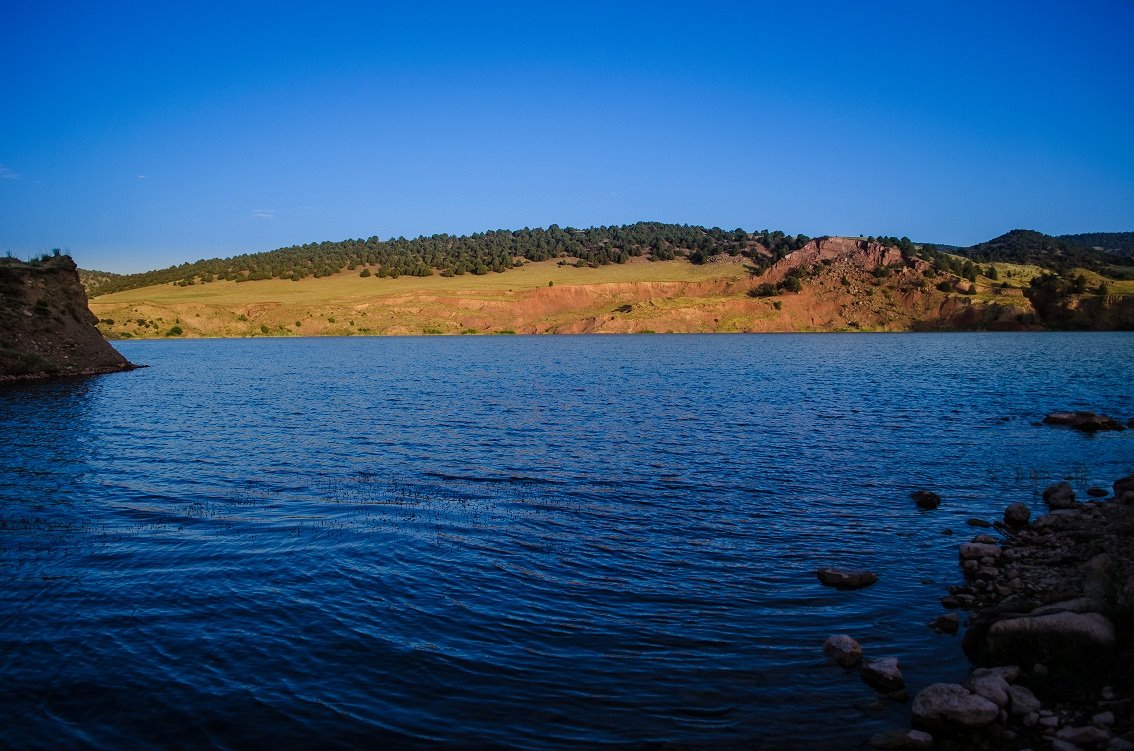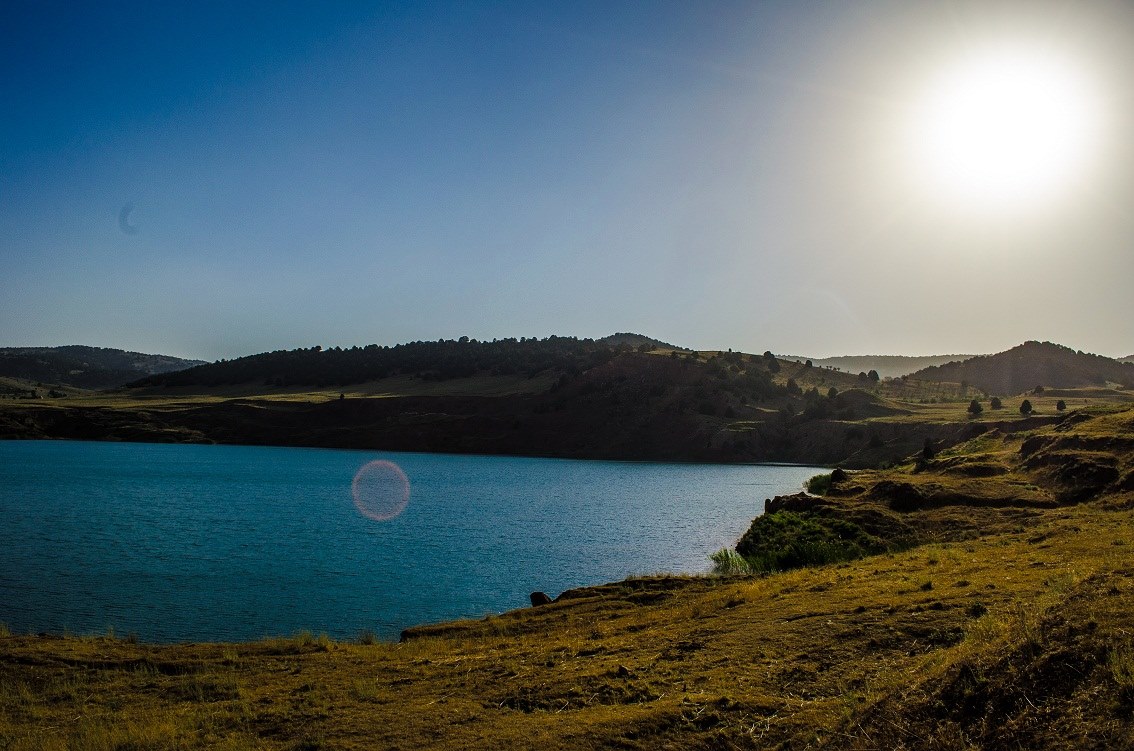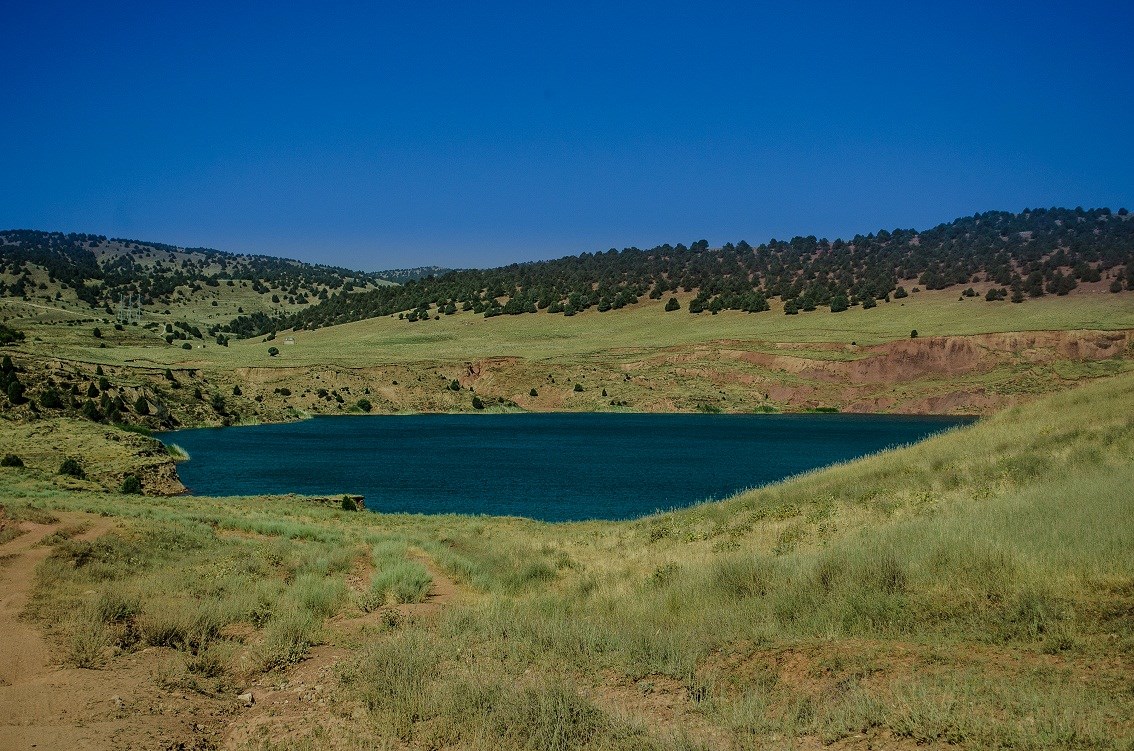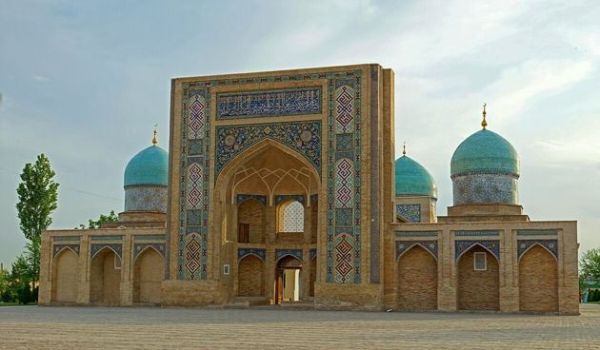Kanbeshbulak Meteorite Lake
Lake Kanbeshbulak is located in the southwestern part of Baysun, Surkhandarya region, on the border with Turkmenistan. Due to the border regime, it can only be accessed from the village of Acrobat, Kashkadarya region. To do this, after leaving the M39 highway, you need to overcome another 40 km of ascents and descents.
The landscapes along almost the entire route are very beautiful, dense juniper forests on the slopes of Mount Tyubere-Oland, small drying lakes framed by dense vegetation and the road winding through the mountain forest. The lake itself is located in a hollow and has dimensions of 800 x 650 m and at a distance of 1700 meters above sea level. According to one version, the lake was created as a result of a meteorite fall. Numerous meteorite impact evidences are observed on a single trajectory leading to the lake from north to south. The soil and river sand at Takhtakaracha pass in the Karatyubinsk Mountains contain an abundance of tektites, small vitreous bodies that are formed under the influence of high temperatures as a result of meteorites hitting the earth from space or from terrestrial matter.
And in the mountains surrounding the Kashkadarya basin in the east, there are large, palm-sized, nostril-shaped and glassy meteorite fragments, most often scattered in separate areas with a diameter of about five meters, as well as other stones of clearly cosmogonic origin.
After analyzing the sequence of falling debris, their sizes and the distances between the points of impact, scientists came to the conclusion that a large meteorite body that left such traces should have fallen into the Khamkan tract, forming a crater, which then filled with water and was named Lake Kanbeshbulak.
The meteoritic formation of the lake's bowl is also indicated by the fragmented, as in an explosion, red sandstones composing its slopes.
An analysis of the rocks forming the lake area suggests that it could not have formed naturally, under the influence of water or any tectonic changes.
The soil and river sand at Takhtakaracha pass in the Karatyubinsk Mountains contain an abundance of tektites, small vitreous bodies that are formed under the influence of high temperatures as a result of meteorites hitting the earth from space or from terrestrial matter.
And in the mountains surrounding the Kashkadarya basin in the east, there are large, palm-sized, nostril-shaped and glassy meteorite fragments, most often scattered in separate areas with a diameter of about five meters, as well as other stones of clearly cosmogonic origin.
Further south, on the surface of the limestone plateau in the foothills of the Sysyztau Mountains, characteristic traces of meteorite impacts are observed – the so-called "broken plate structures". Moreover, the largest of them are located in a chain from north to south. These structures are clearly visible from space, and their approximate dimensions can reach 200 meters. And the size of the entire areola of these structures is approximately one and a half kilometers.
The small, 800-meter-wide lake Kanbeshbulak, located in the Khamkan tract in the west of the Surkhandarya region of Uzbekistan, is by all indications a unique natural monument, previously unexplored from this point of view.
A unique place for eco-tourism.














